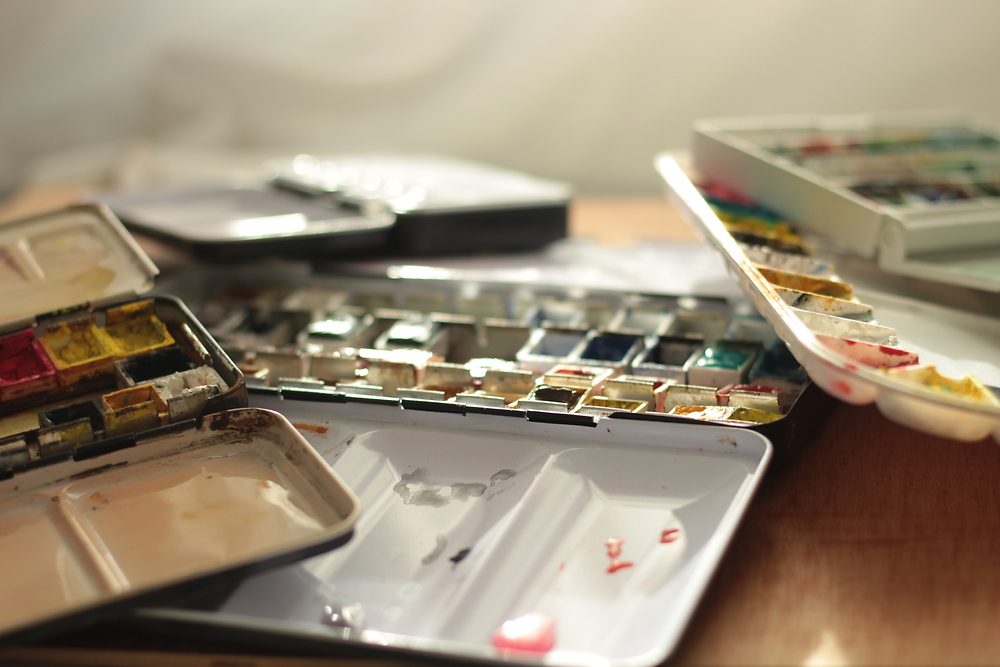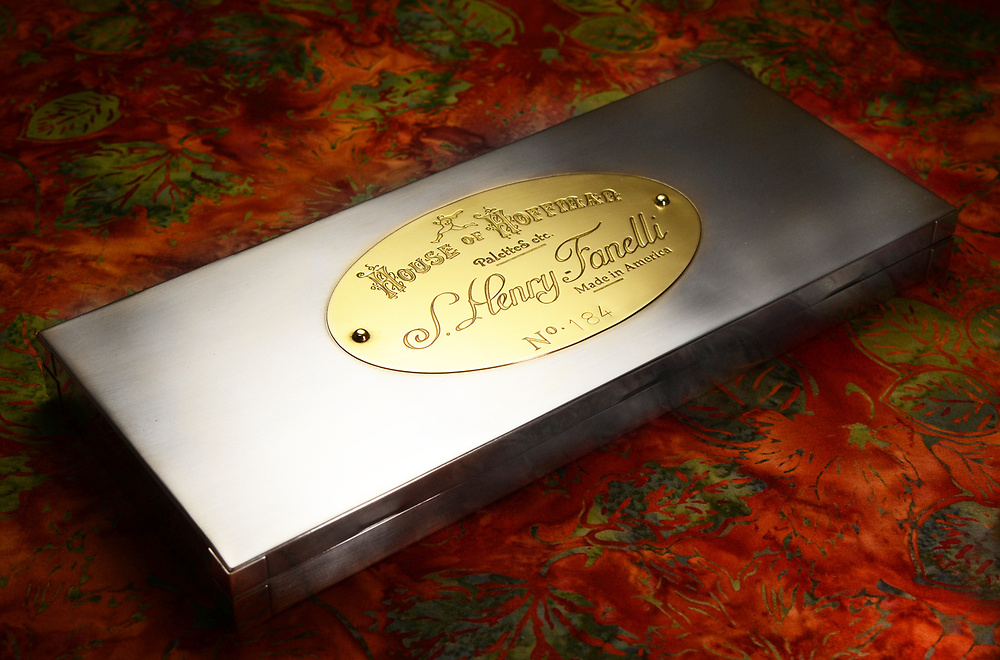Palettes
Palettes most often come in metal, plastic or ceramic, able or not to hold standard pans/half-pans, with a great variety of shape & size. Metal palette can get deformed; plastics won’t, but can break. Ceramic are pleasant to use, but fragile and heavy; a big white plate can be used as a studio palette.

A few palettes
by
M. Bivert
Big palettes take more space, but often come with more, wider mixing areas, thus reducing the need to clean the palette regularly.
Tip: Some artists never clean their palettes: the neutral color created by accumulation of various pigments can be used as a neutral tint, useful to reduce chroma without mudding the colors too much.

Brass palette, handmade at House of Hoffman by Steve Fanelli
by
House of Hoffman
The Rolls Royce of the palette is the handmade brass palette, often with a bespoke design; see for instance:
- houseofhoffman.com;
- facebook.com/brasspaletteindia;
- lapetitepalette.com;
- littlebrassbox.com;
- classicpaintboxes.com;
- watercolorpaintboxcompany.com.
Because of the high costs and slow delivery time, both caused by manual manufacturing, some people “obviously” decided to try themselves at building them, while documenting their process:
Tip: palettes, plastic or metal, can get stained by some pigments such as PR122 (quinacridone magenta , PR122 (artiscreation.com), PR122 (handprint.com)). They can usually be cleaned with either a regular eraser, or with 90° alcohol.
Easel, setup
From tapping paper to a plywood board, or watercolor paper block, glued on the sides, to hand-made watercolor easel of all size and shape, through manufactured French easels there are many solutions available.
If you already have a good quality tripod and are reluctant to invest time or money in building or buying a fine easel, you can easily build something similar to:
Or, if you have a bit more time and a unused French easel lying around (…):
Resources
- A few hand-picked, free video tutorials, by established artists;
- handprint.com, the source of in-depth technical/scientifical explanations for watercolors;
- artiscreation.com’s pigment index, an exhaustive list of pigments from various manufacturers;
- badwatercolorart.wordpress.com critics many artists/paintings, for better or for worse, definitely educative;
- American Watercolor contains various articles on technical matters;
- Granulation, what and why?;
- jacksonart.com’s Everything you ever wanted to know about watercolour paper;
- The Mind of Watercolor, a YouTube channel with plenty of painting technique informations, covering a wide range of subjects;
- drawpaintacademy.com’s article on Sargent’s watercolors; see also the artsandculture.google.com for Sargent, containing a few high resolutions images of his watercolors, so does wikiart.com;
- some of Anders Zorn’s watercolors from wikiart; see also his artsandculture.google.com page.
Comments
By email, at mathieu.bivert chez: